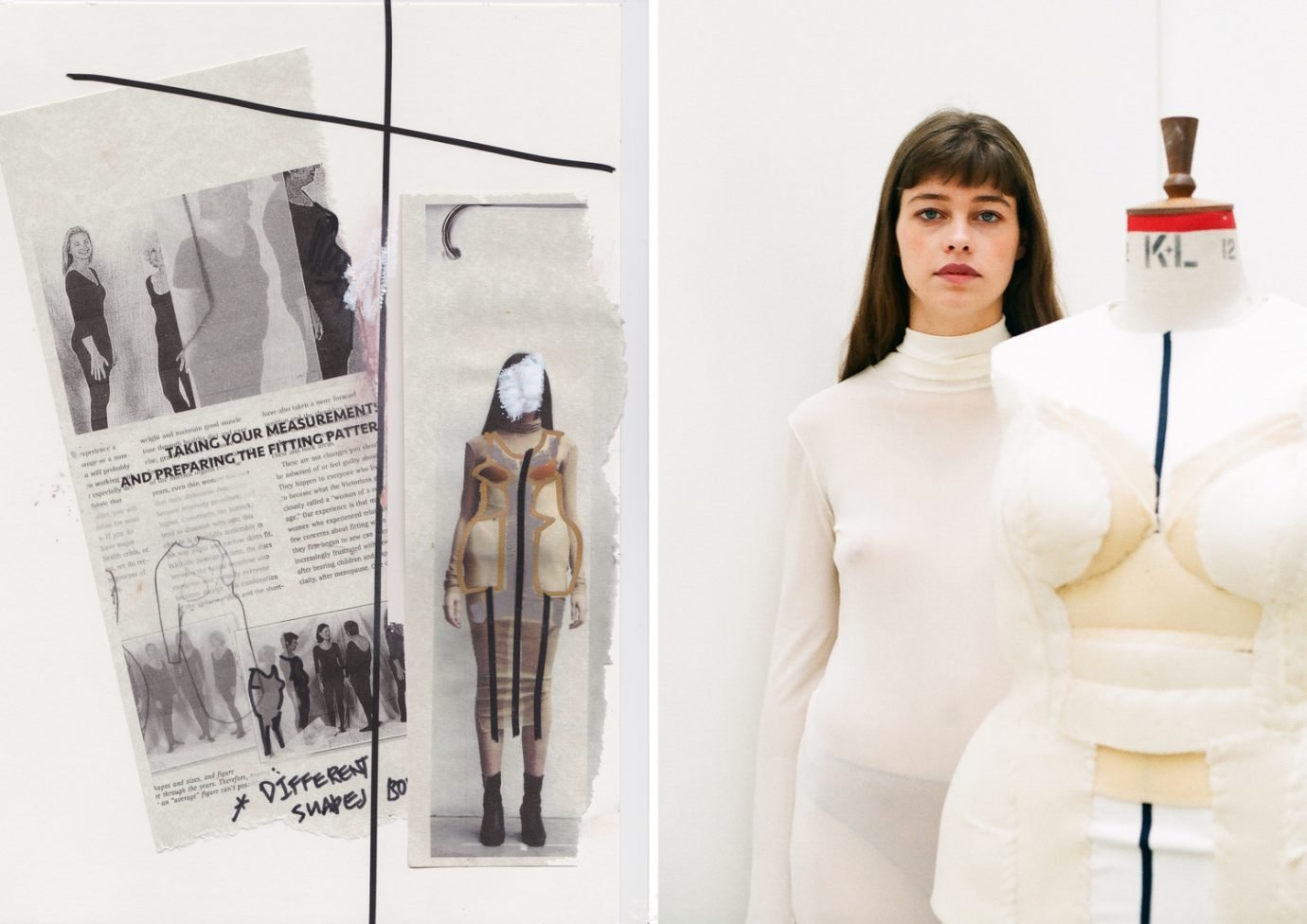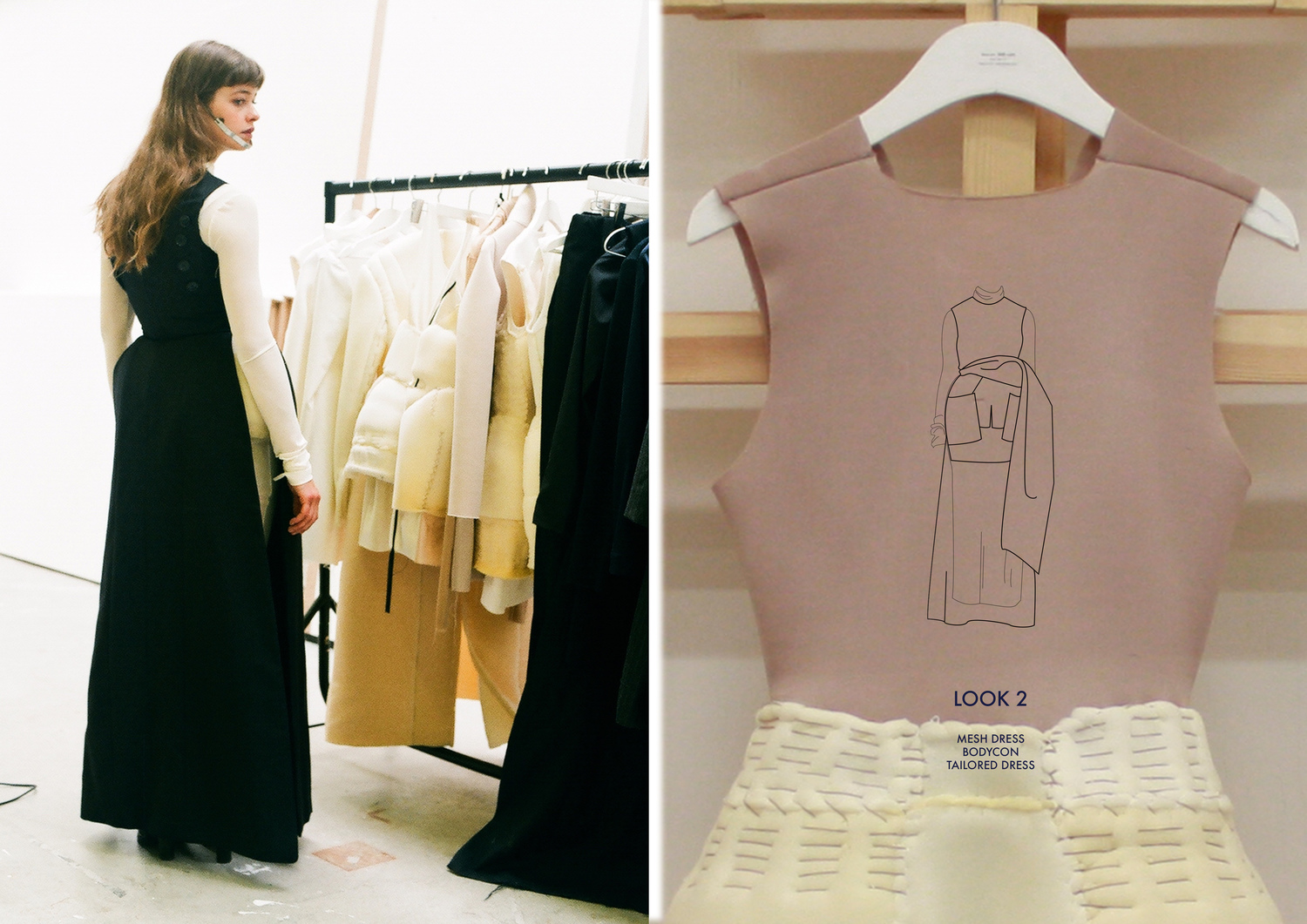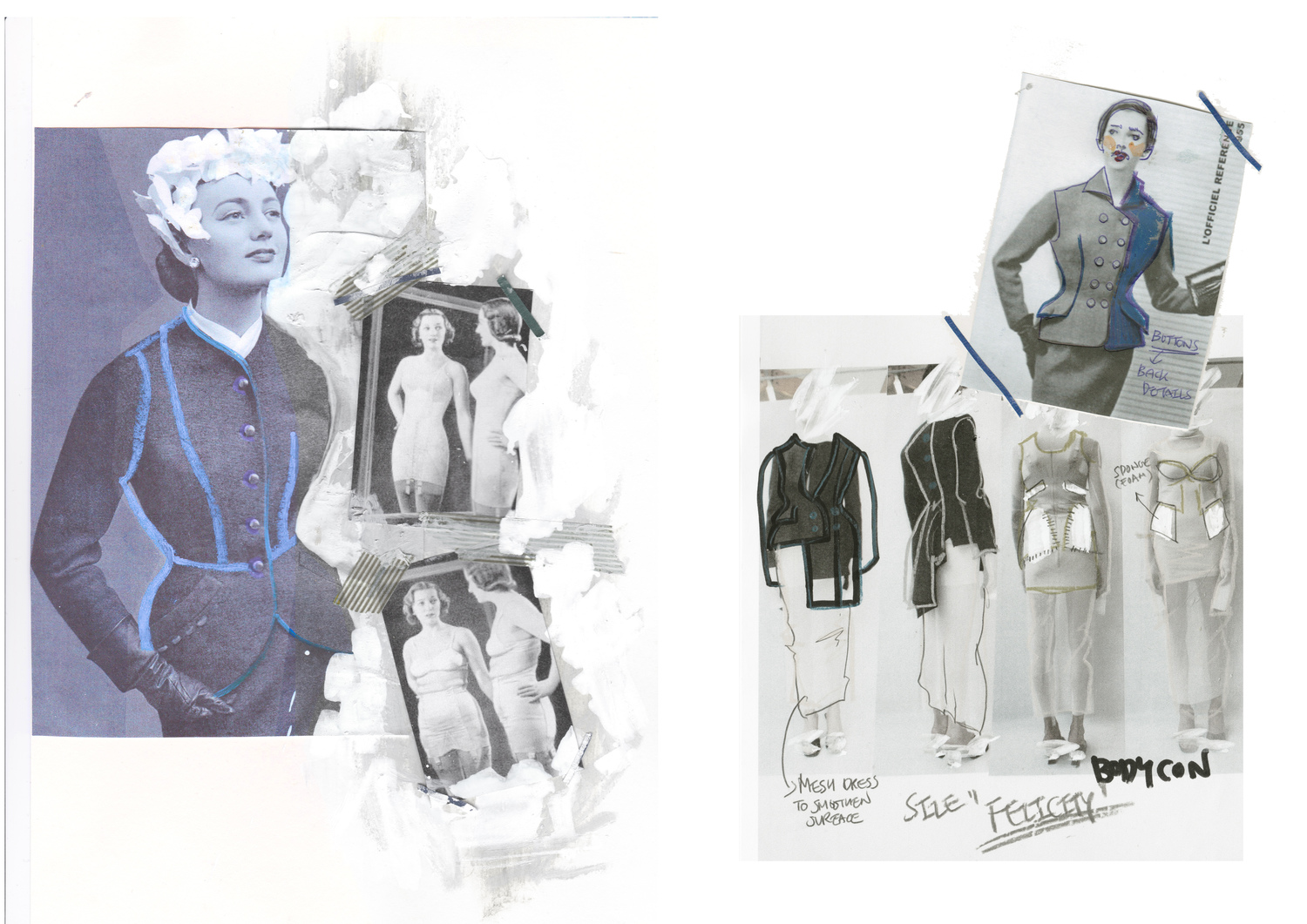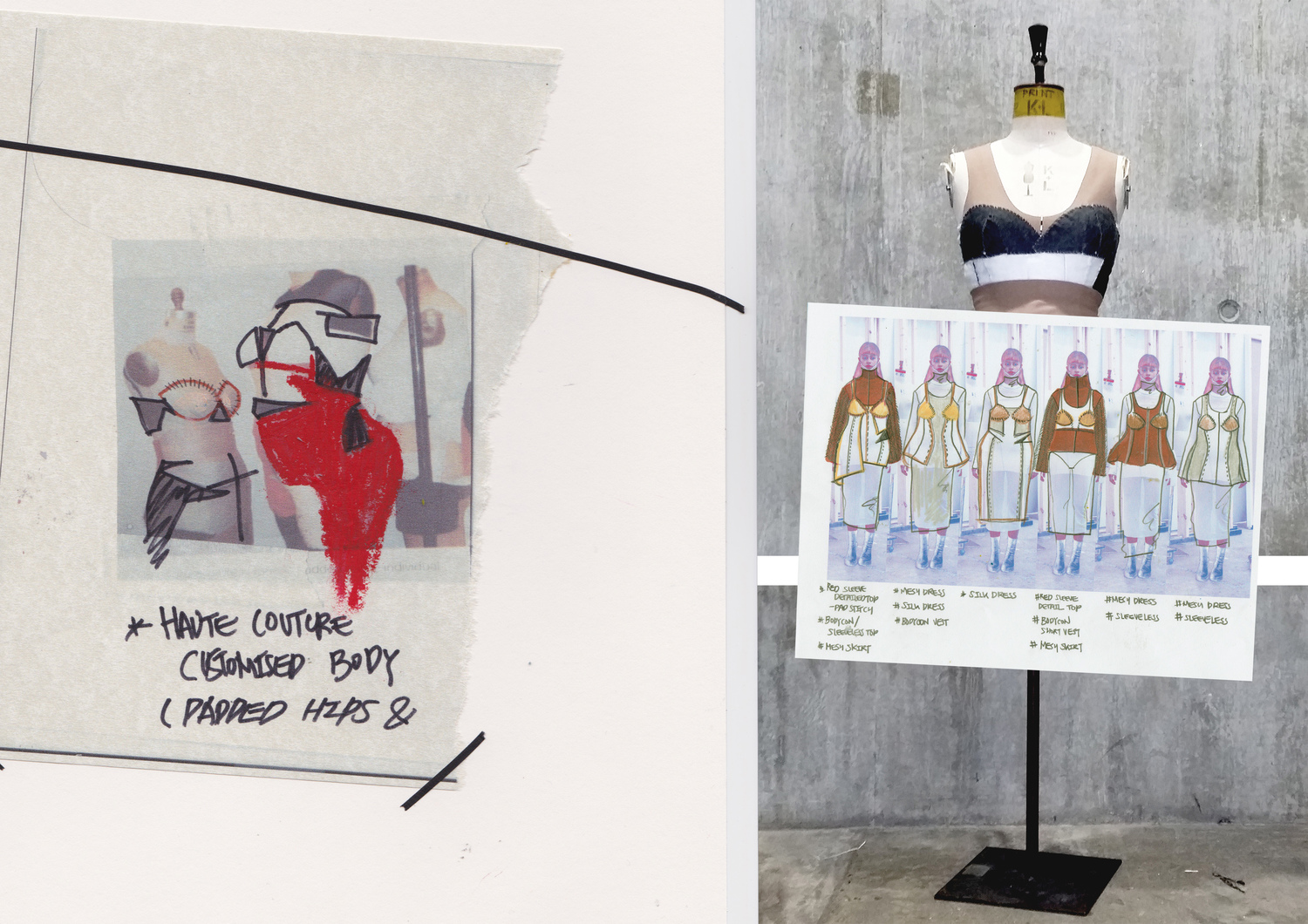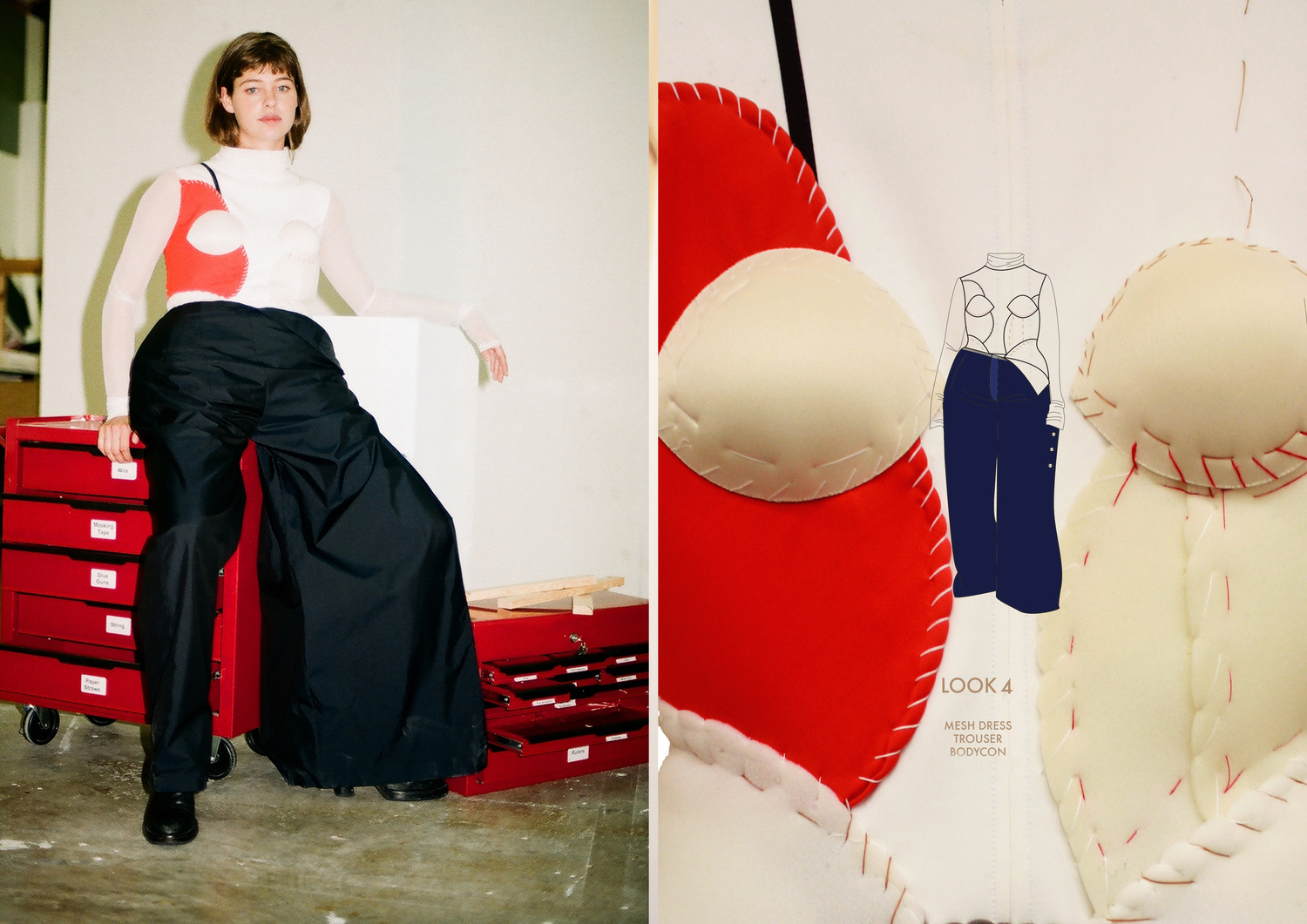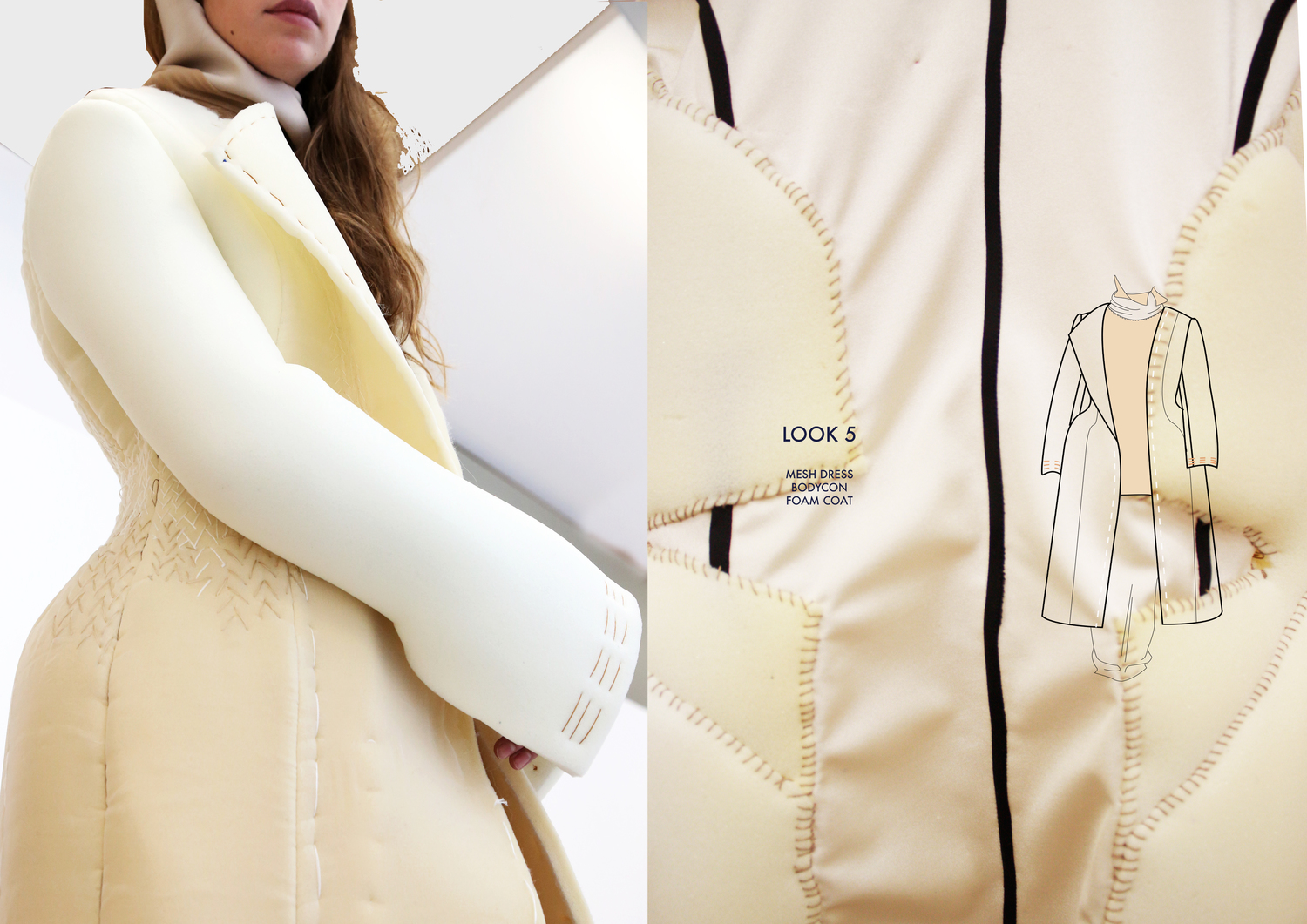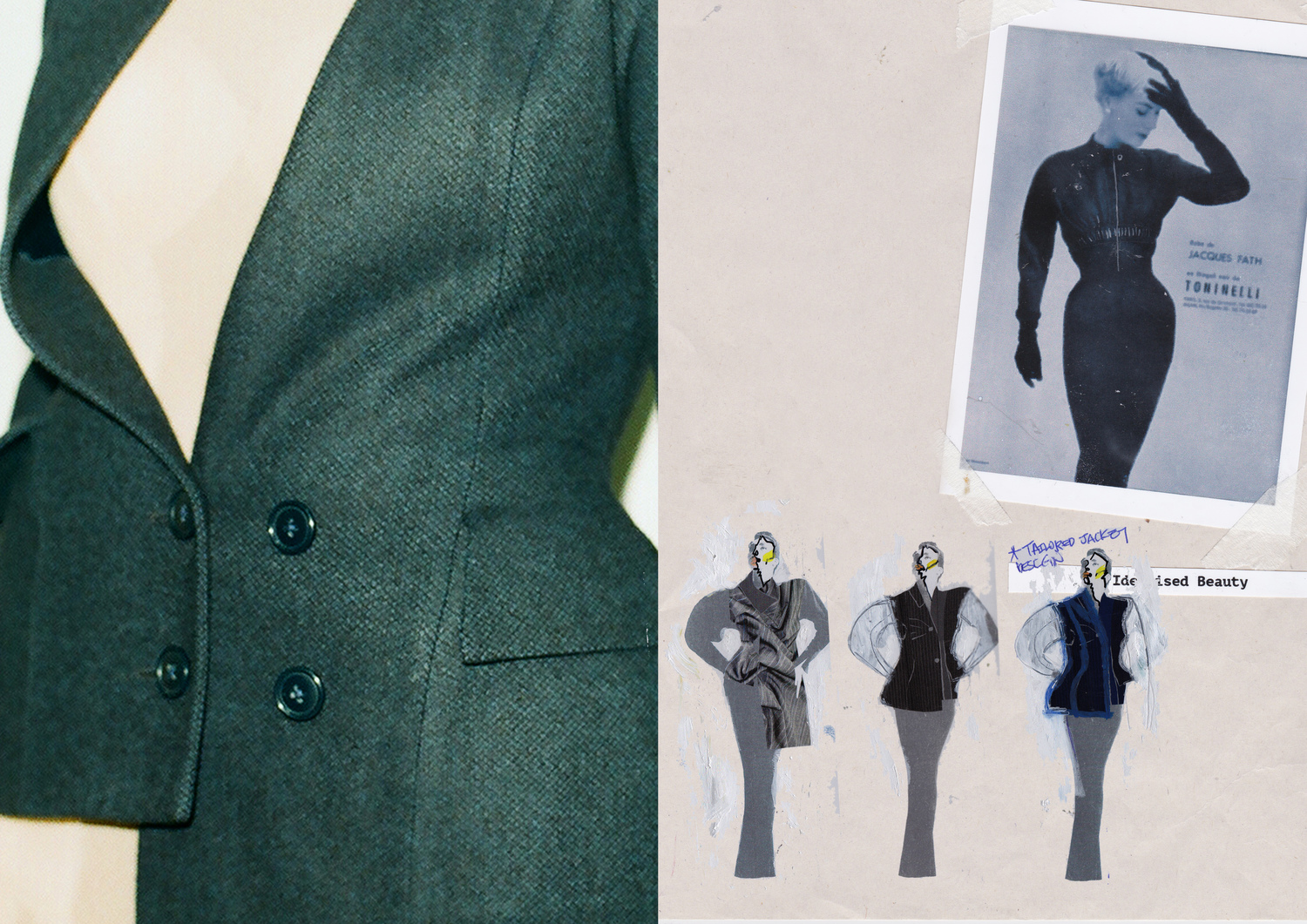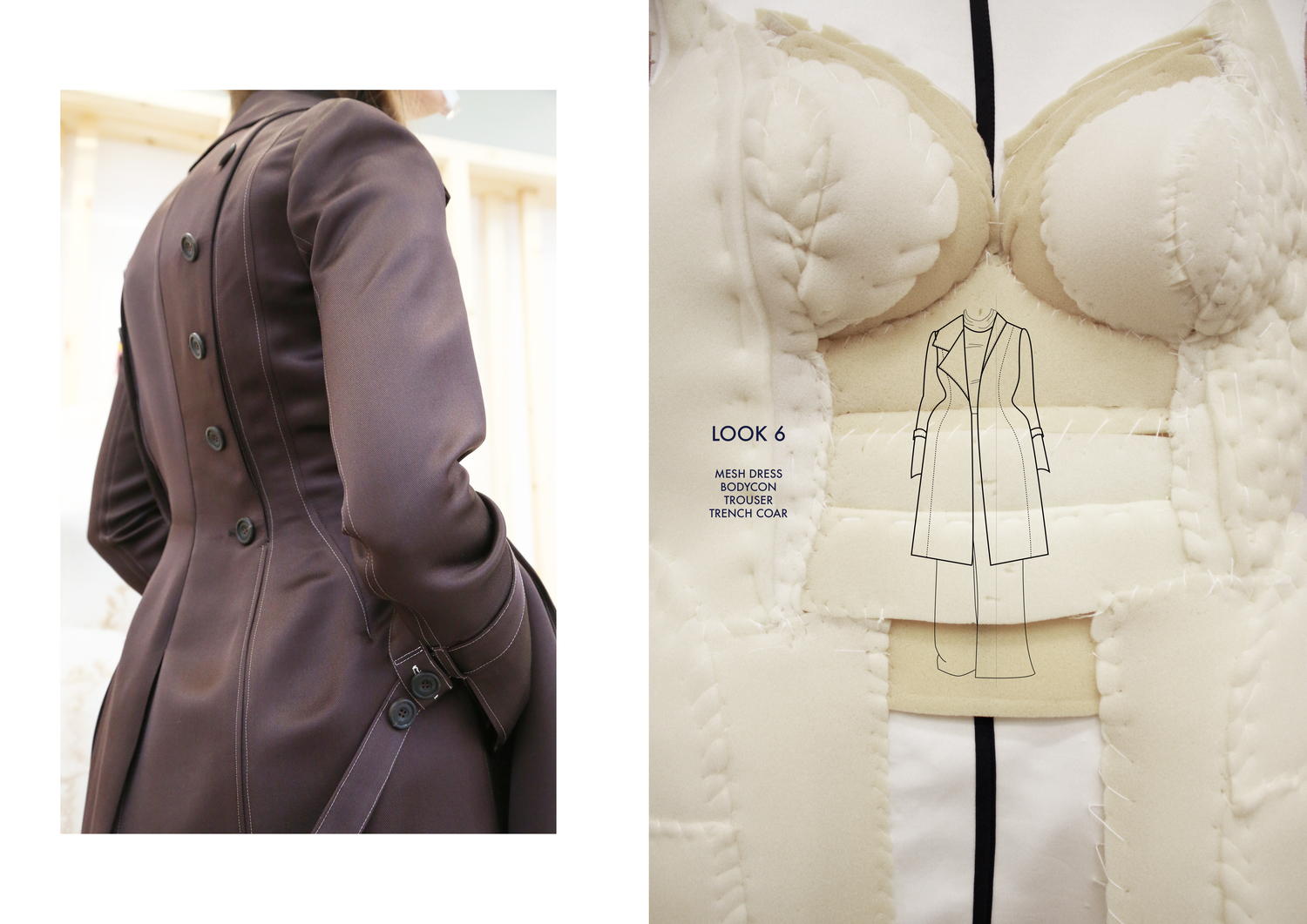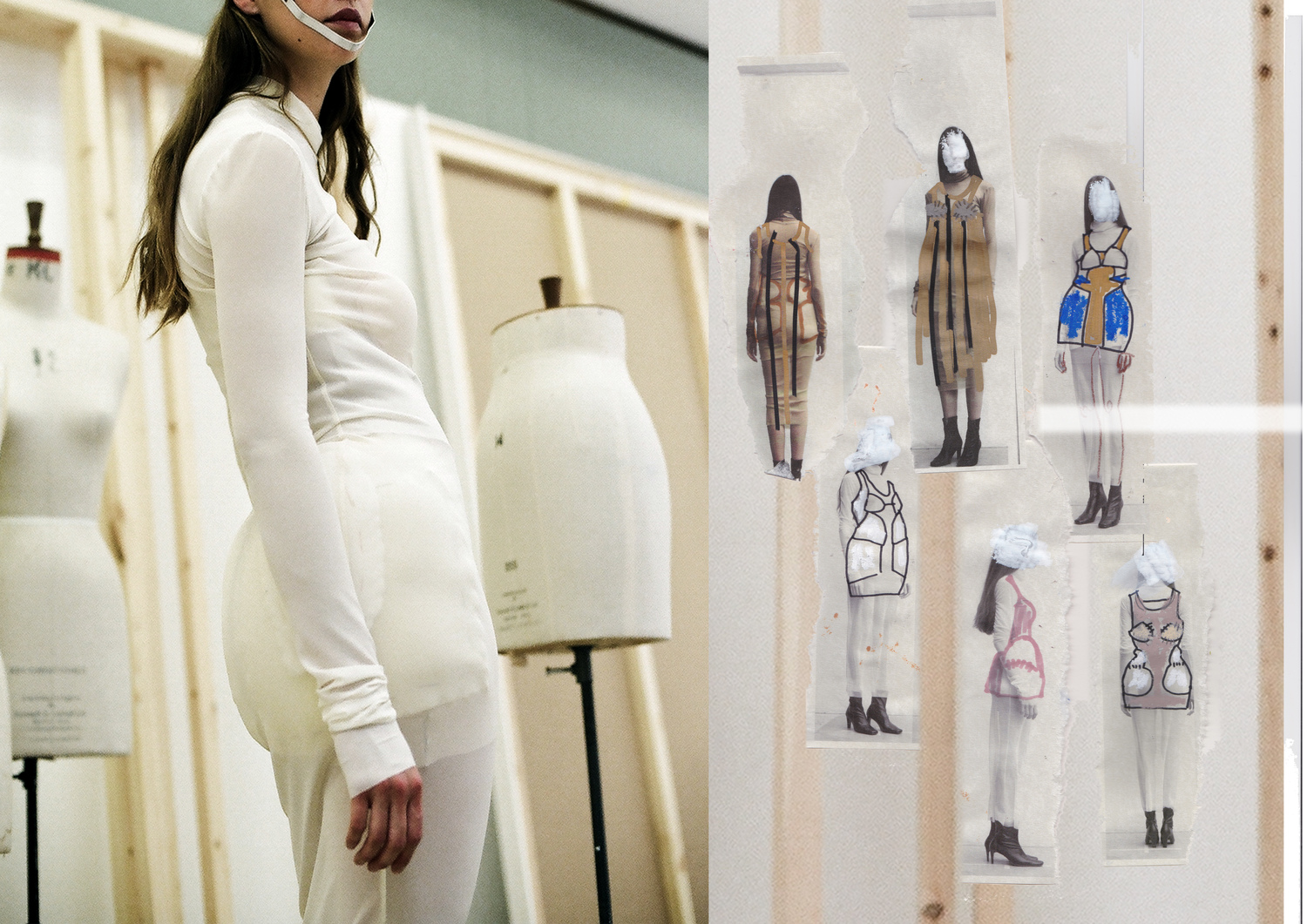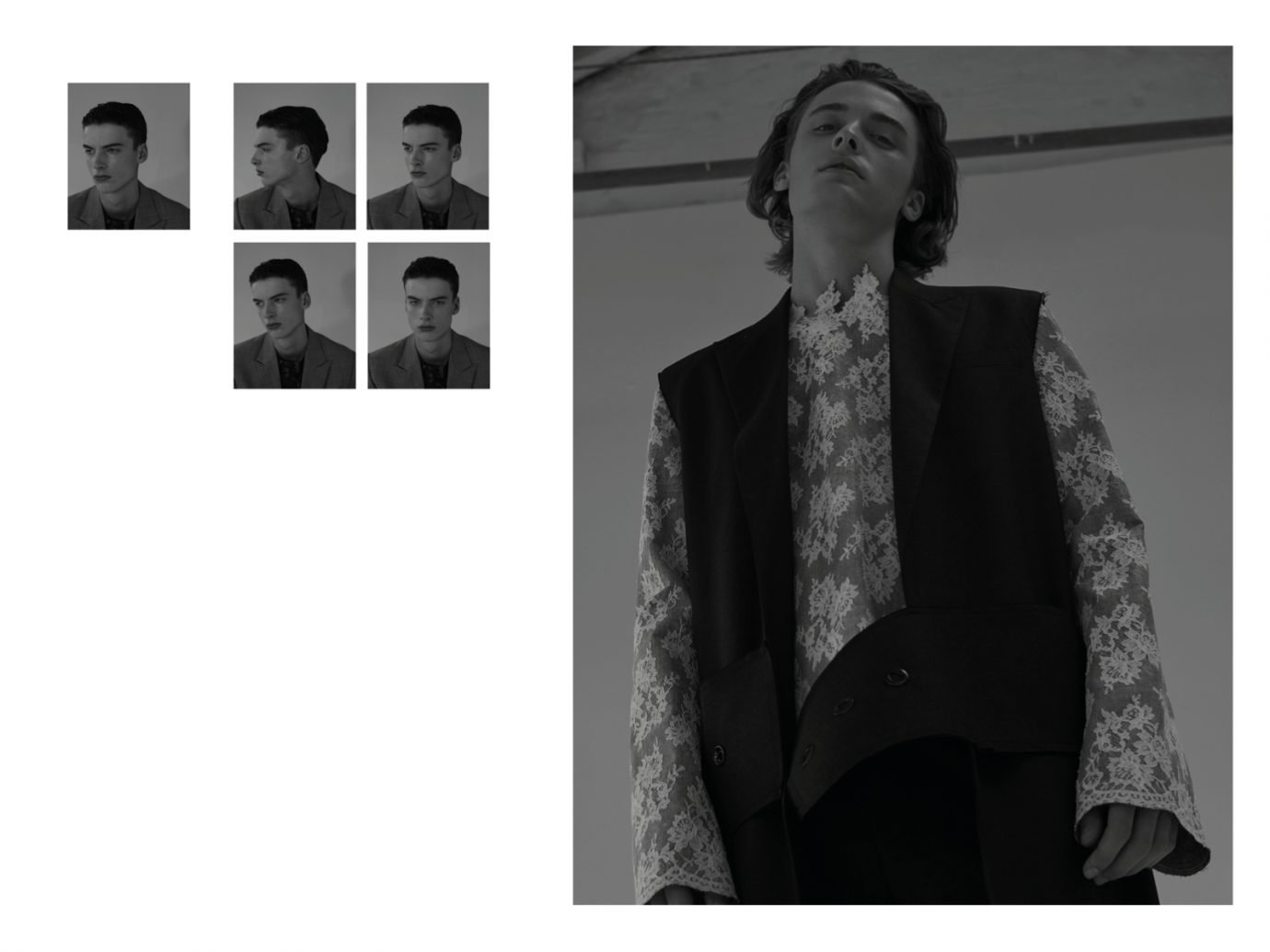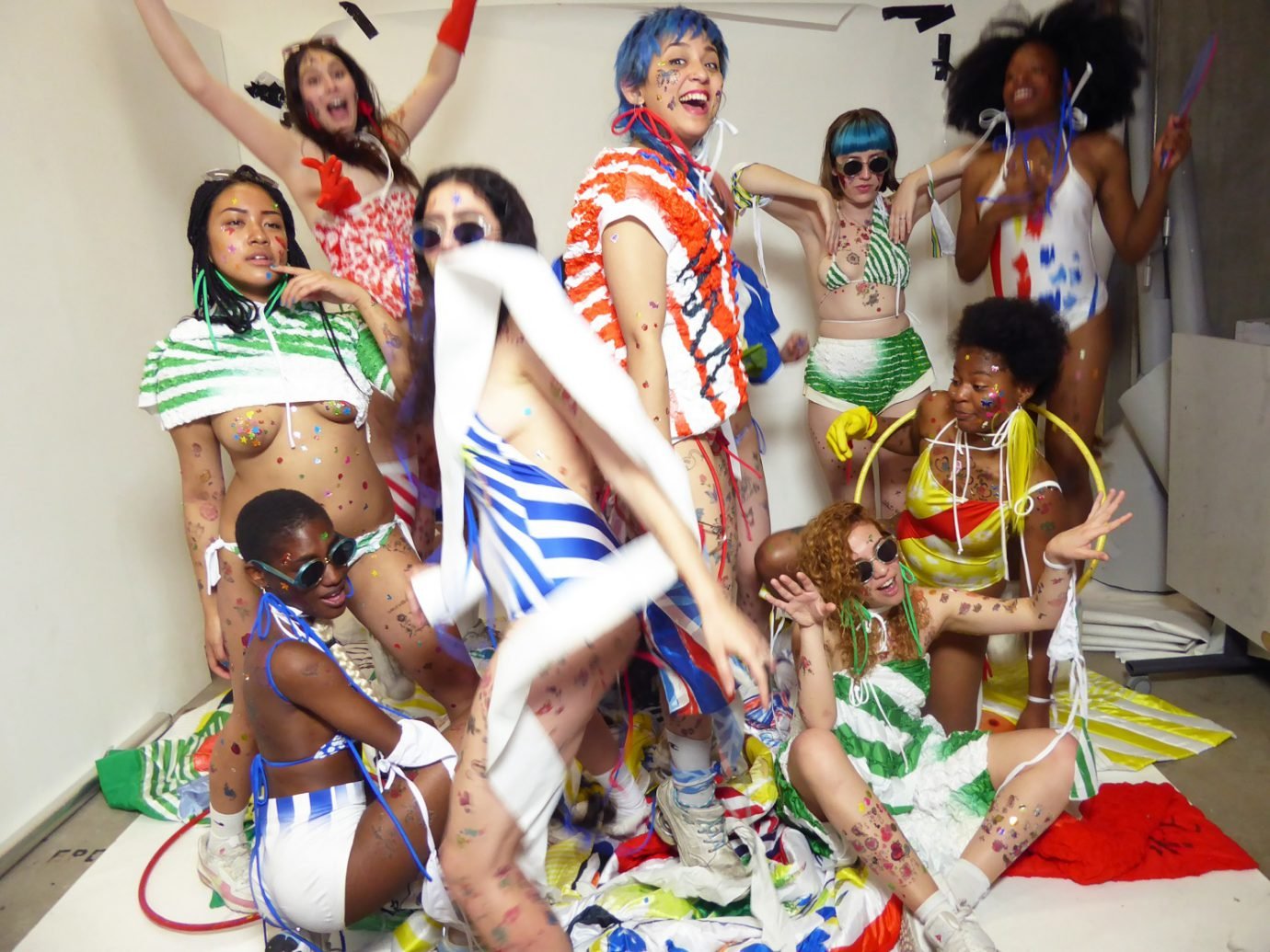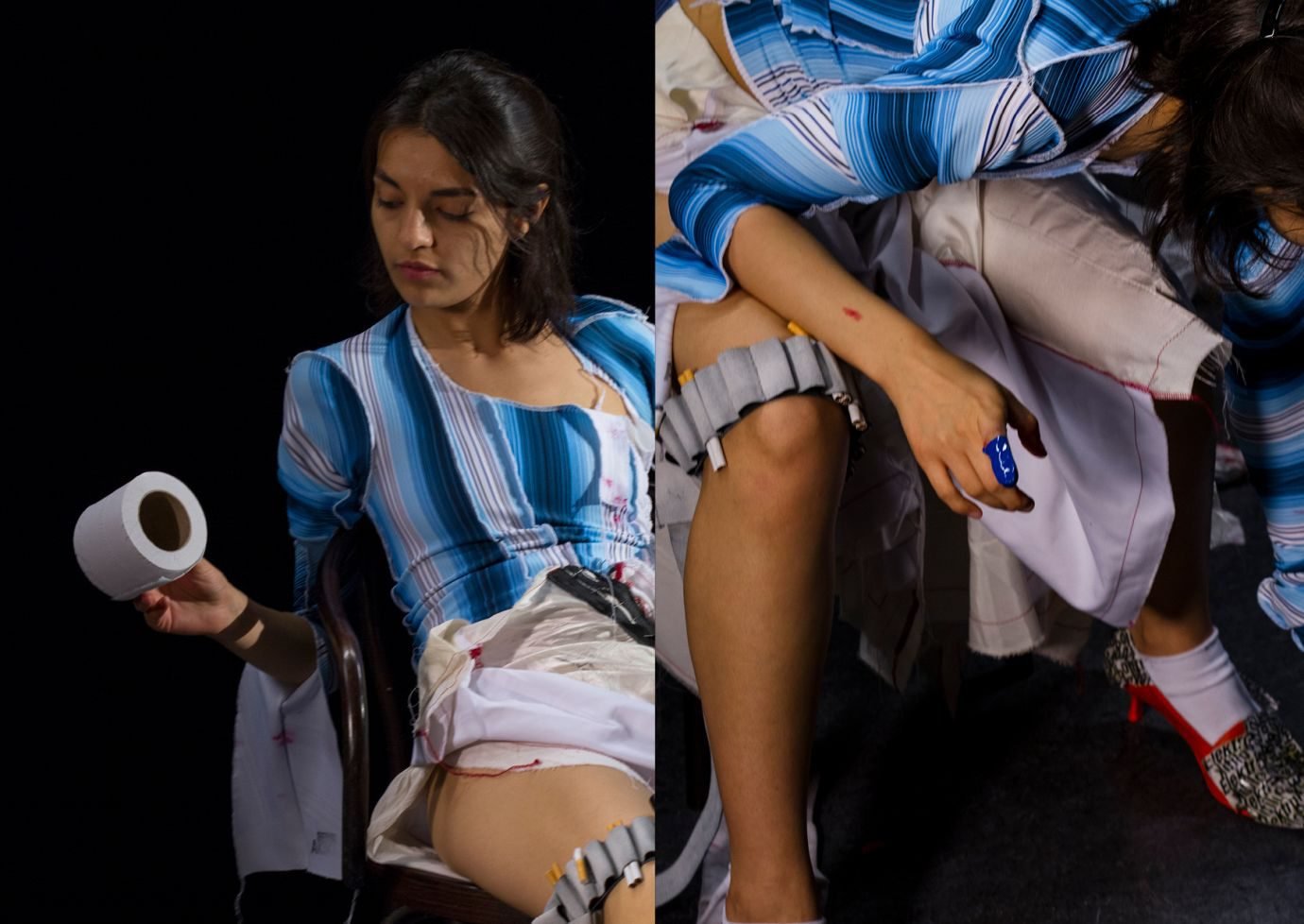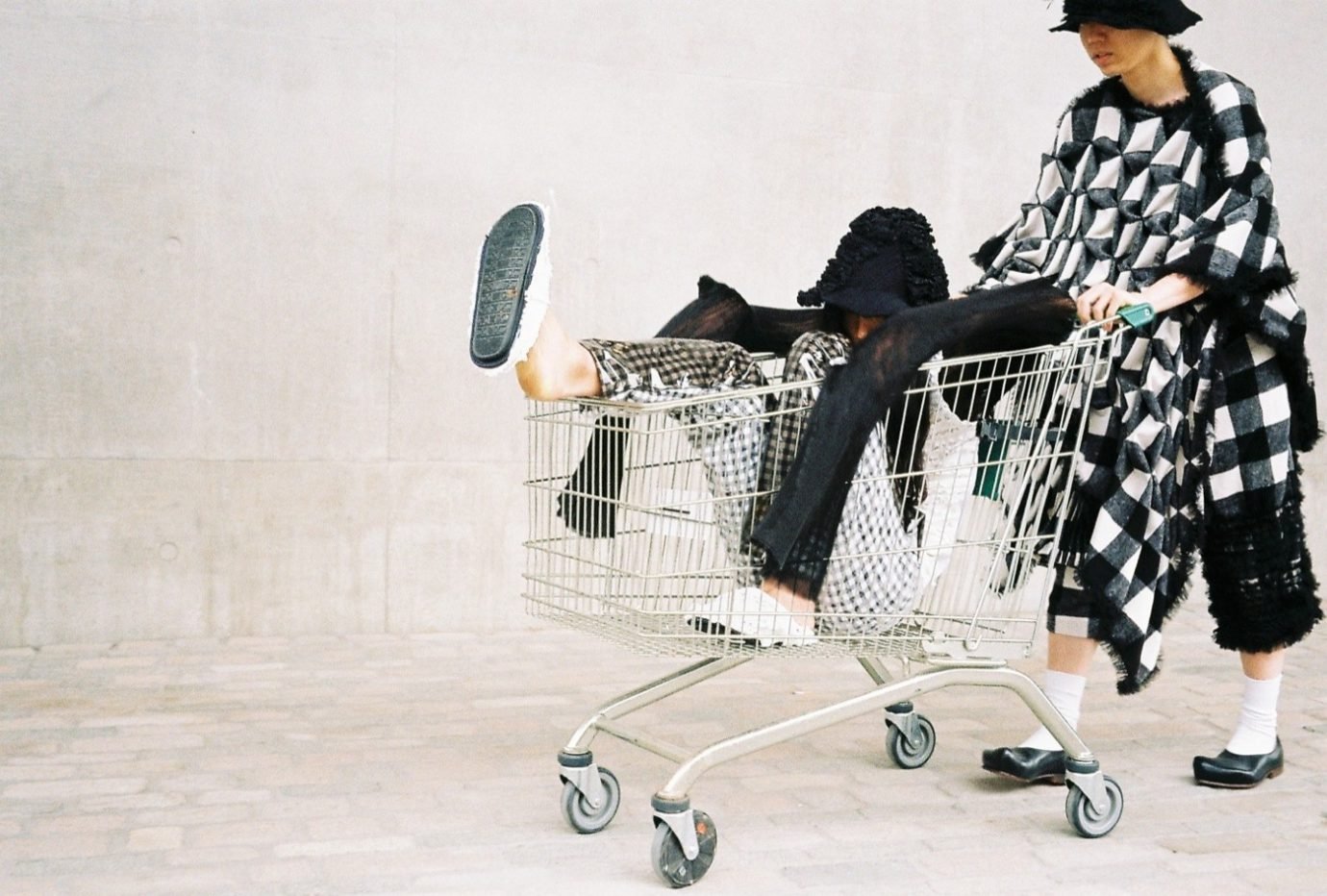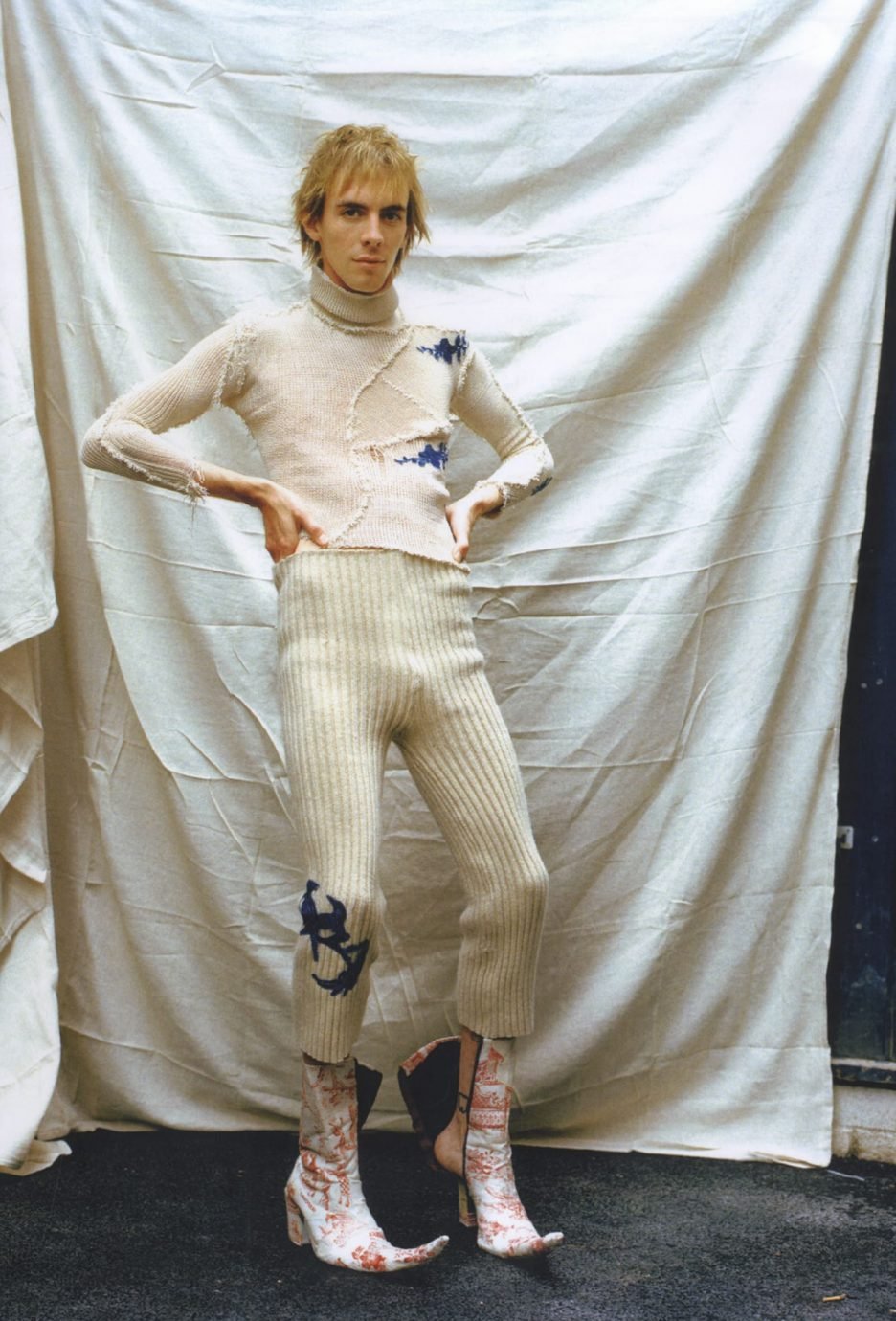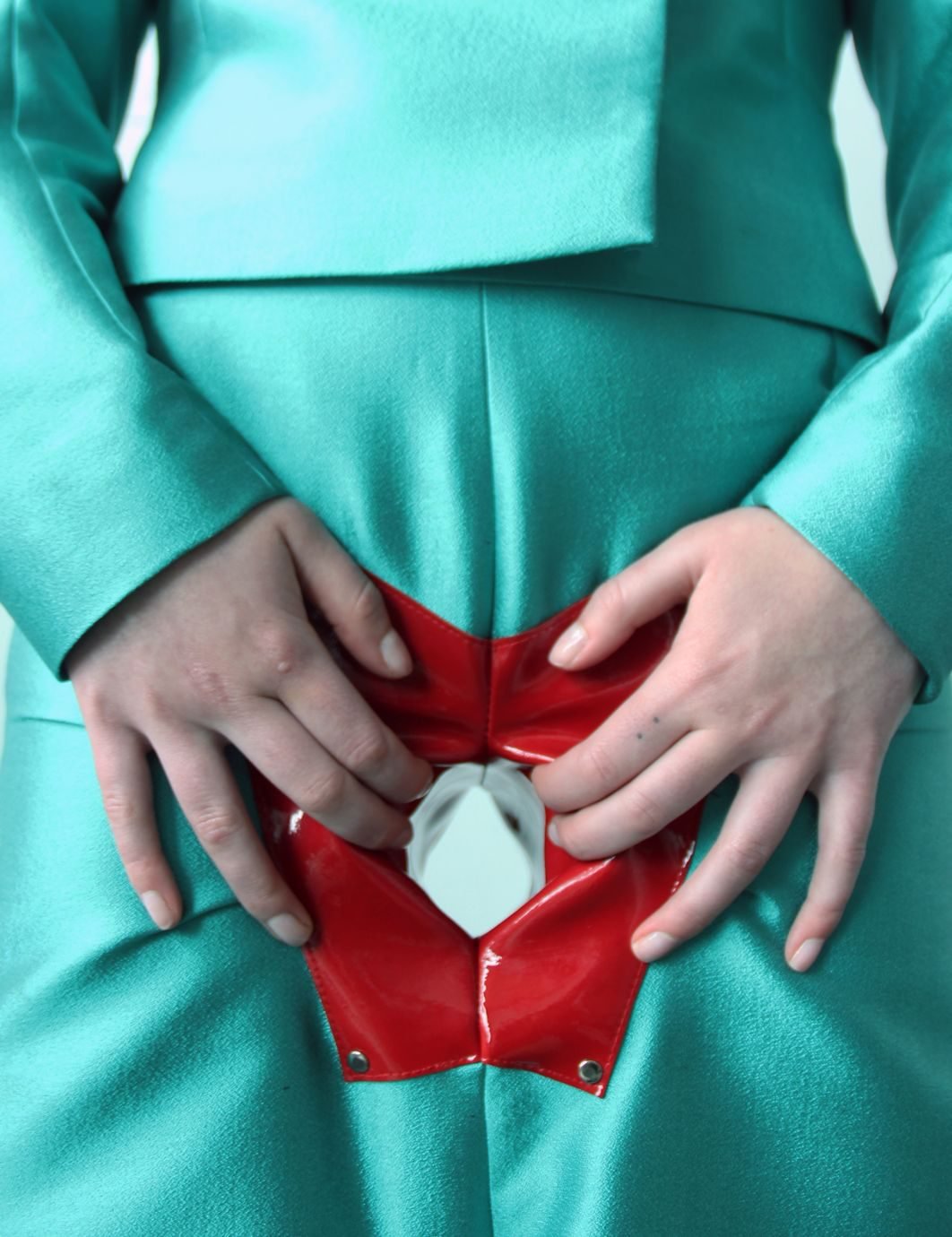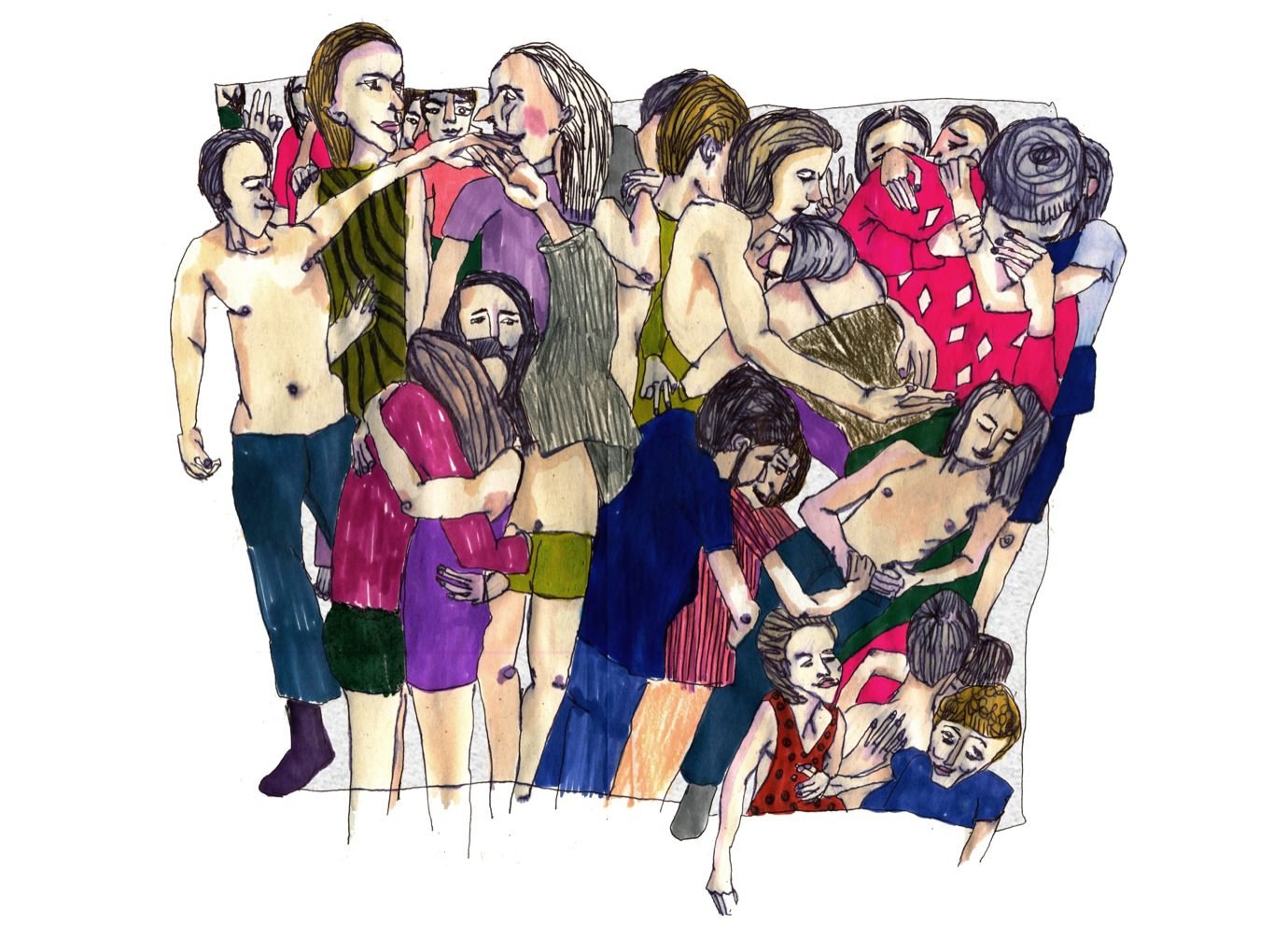How do you create a visual narrative out of an abstract concept? Is it a challenge to translate a very conceptual idea into something practical?
I usually try to identify a historical or cultural aspect of the theme, and initiate my research on these findings. The perception of beauty was a difficult theme for me to visualize. I first looked at some social and cultural issues relating to perceptions of beauty, such as anorexia, and how most fashion models are stick thin. I then got the urge to challenge these issues by distorting the standardized female body shape to unconventional shapes in my garments. I used 1950s garments and customized haute couture mannequins as starting points, since they accentuate the shape of the body.
How did your collection develop during the course of the year?
I spent a lot of time working on the conceptual stage of the project, and it took me a long time to decide how to best communicate my theme to a wide audience. It involved lots of tutorials, and a juggling of many ideas to find the most effective way to deliver the concept throughout a fashion collection. During the production stage it was very time consuming to make all the sponge body suits, that I designed for every look to convey all the different body shapes. Also, it was very technically difficult, since it was more like sculpting a body from sponge than simply sewing a garment. I have to thank Jan, our creative pattern tutor – she has a lot of experience making mannequins and really helped me out.
What does your development process usually look like?
I usually sit in front of the mannequin and stare at it. I like to visualize my ideas in my head. I hate sketchbooks!
Do you feel that your collection somehow reflects who you are as a designer?
Yes. I was able to challenge my own perception of beauty as a fashion designer since – as much as I hate to admit it – I’m also attracted to the conventional ideas of beauty in the fashion industry.
Being critiqued constantly, sometimes we can lose sight of who we are or what our work stands for. Where would you draw the line between growing from those feedbacks and conforming to give tutors what they want?
This is a very difficult question for me. I do think it’s crucial to listen to other people for critique and advice, and I try to consider what they might say about my work. However, I’m very careful about what I make out of their thoughts, since it’s my work after all. For my graduate collection, I found it hard to balance my own beliefs with the tutors’ advices, and by now there are some comments that I wish I would have listened to.
What did you do during placement year?
I worked at Celine and Nicomede Talavera. It was very helpful to experience both big and small brands.
Did your experience in the industry give you a better insight into how the business of fashion actually works?
Personally, I think I learned the most during placement year. When you’re in school it’s more about getting to know yourself better, but in the industry you have to learn how to apply your knowledge onto the real world of fashion. This is very important knowledge, since in the real world designing is hardly ever about satisfying yourself. I don’t think there were many things that CSM didn’t prepare me for. I think that a significant portion of all art disciplines comprises for self-teaching. However, I’m thankful I did the Fashion Design Marketing Pathway since they provided me with the opportunity to design for a specific target customer, which I learned is very important during my placement year.
What advice would you give for students choosing their placements?
Don’t be frustrated about not hearing back from companies. Keep applying. Also, try not to be too picky about what brands you want to work for. No matter how different a brand is from your own aesthetic, there is still so much to learn.
Do you think you will stay in fashion? If so, how would you like to be working professionally as a designer?
I’m leaving the doors very open at the moment, you never know what the future provides.
What are your plans for the immediate future?
I would like to get some rest and then have some time to think about my future. When I started to study at CSM, I had five years ahead automatically planned for me. This time it’s different, so I have to handle my decisions with care.

